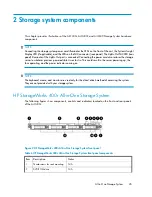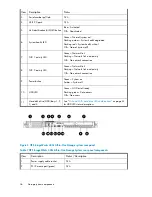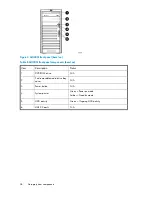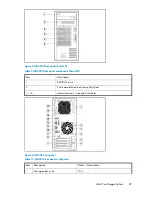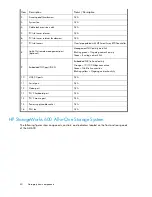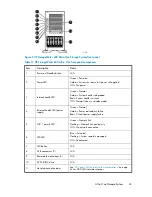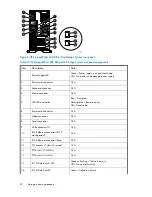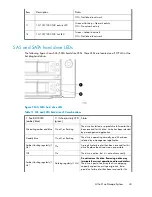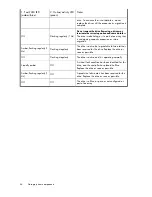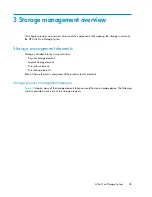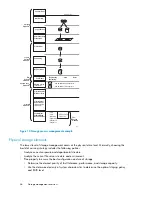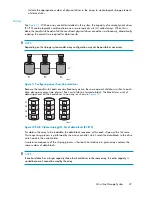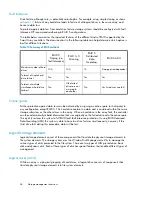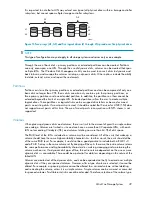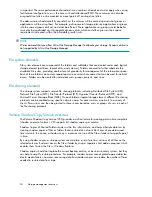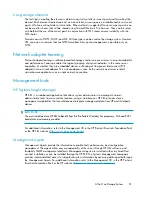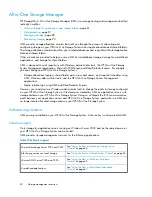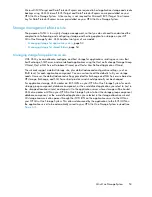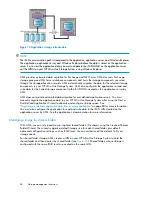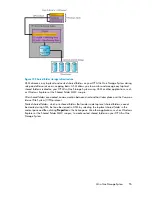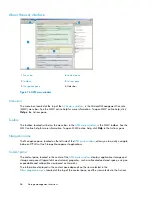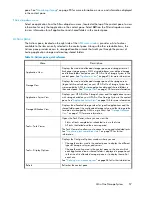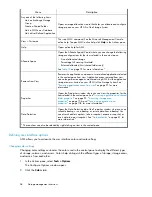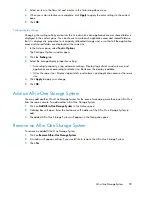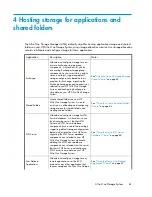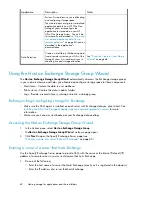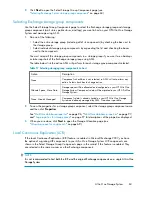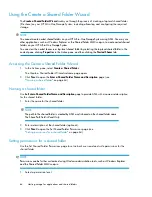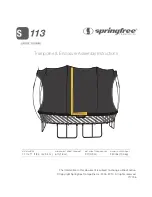
It is important to note that a LUN may extend over (span) all physical drives within a storage controller
subsystem, but cannot span multiple storage controller subsystems.
L4
L5
L3
A1
L1
L2
A2
gl0045
Figure 13 Two arrays (A1, A2) and five logical drives (L1 through L5) spread over five physical drives
NOTE:
This type of configuration may not apply to all storage systems and serves only as an example.
Through the use of basic disks, primary partitions or extended partitions can be created. Partitions
can only encompass one LUN. Through the use of dynamic disks, volumes can be created that span
multiple LUNs. The Windows Disk Management utility can be used to convert disks to dynamic and
back to basic, and manage the volumes residing on dynamic disks. Other options include the ability
to delete, extend, mirror, and repair these elements.
Partitions
Partitions exist as either primary partitions or extended partitions and can be composed of only one
basic disk no larger than 2 TB. Basic disks can also only contain up to four primary partitions, or
three primary partitions and one extended partition. In addition, the partitions on them cannot be
extended beyond the limits of a single LUN. Extended partitions allow the user to create multiple
logical drives. These partitions or logical disks can be assigned drive letters or be used as mount
points on existing disks. If mount points are used, it should be noted that Services for UNIX (SFU) does
not support mount points at this time. The use of mount points in conjunction with NFS shares is not
supported.
Volumes
When planning dynamic disks and volumes, there is a limit to the amount of growth a single volume
can undergo. Volumes are limited in size and can have no more than 32 separate LUNs, with each
LUN not exceeding 2 terabytes (TB), and volumes totaling no more than 64 TB of disk space.
The RAID level of the LUNs included in a volume must be considered. All of the units that make up a
volume should have the same high-availability characteristics. In other words, the units should all be
of the same RAID level. For example, it would not be a good practice to include both a RAID 1+0
and a RAID 5 array in the same volume set. By keeping all the units the same, the entire volume retains
the same performance and high-availability characteristics, making managing and maintaining the
volume much easier. If a dynamic disk goes offline, the entire volume dependent on the one or more
dynamic disks is unavailable. There could be a potential for data loss depending on the nature of the
failed LUN.
Volumes are created out of the dynamic disks, and can be expanded on the fly to extend over multiple
dynamic disks if they are spanned volumes. However, after a type of volume is selected, it cannot be
altered. For example, a spanning volume cannot be altered to a mirrored volume without deleting
and recreating the volume, unless it is a simple volume. Simple volumes can be mirrored or converted
to spanned volumes. Fault-tolerant disks cannot be extended. Therefore, selection of the volume type
All-in-One Storage System
49
Summary of Contents for STORAGEWORKS ALL-IN-ONE STORAGE SYSTEM
Page 14: ...14 ...
Page 34: ...Installing and configuring the server 34 ...
Page 60: ...Storage management overview 60 ...
Page 88: ...Data protection 88 ...
Page 120: ...Troubleshooting servicing and maintenance 120 ...
Page 122: ...System recovery 122 ...
Page 172: ...Microsoft Services for Network File System MSNFS 172 ...
Page 204: ...Index 204 ...

